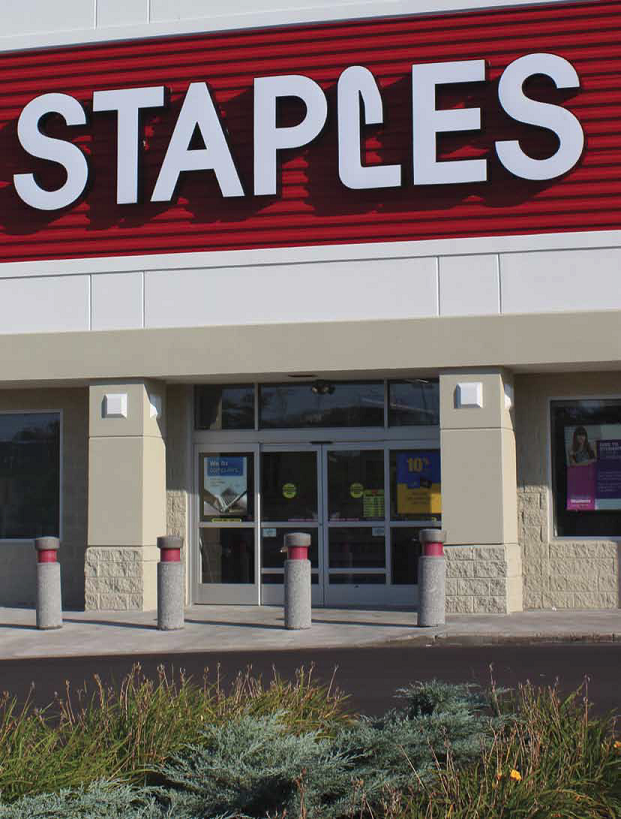Invoice Management Reduces Energy Costs
September 2012 Integrated Solutions For Retailers
By Erin Harris, associate editor
An invoice management program enabled $25 billion Staples to reduce its carbon footprint by 7% as well as lower overall energy costs.

For retailers with many locations across the country, driving down utility costs and improving facility efficiency is critical to stay competitive. Tracking invoice data and doing a comprehensive audit to ensure the correct amounts are being paid is labor-intensive and often outside the scope of most AP departments. Dealing with billing mistakes becomes a reactive, rather than proactive, task. Bob Valair, director of energy and environmental management at Staples, oversees the office supplies giant’s energy program. Valair recognized early on that eliminating bill payment as an AP function was a key to maintaining Staples’ successful energy management program.
With an energy management program comes a tremendous amount of data and invoices. Indeed, Staples locations receive a total of 55,000 utility bills (water, electric, and gas) each year, but the retailer’s small AP department found invoice management to be a daunting task — one that required not only on-time payment but also a clear understanding of energy data. Since the inception of Staples’ energy management program in 1993 (the retailer operates Novar’s energy management system [EMS] throughout the entire chain), the retailer’s AP department paid the utility bills and used a third-party software program to keep track of them. But, overall, Valair felt that energy bill payment and tracking was not the core of Staples’ business. While he wanted access to the data and the ability to understand it, that was not the AP team’s forte. “Our AP team was basically just paying the bills, because it’s an AP function,” says Valair. “But, these bills are complicated. They include estimates, misreads, and other technical information that isn’t easily understood if you’re not close to it. AP made payments immediately, without really understanding the data provided, because they were concerned with a cancellation of service.” For example, Valair explains that AP would process and pay the bills, but sometimes the bills did not align with the accounting department’s records. “AP would state that they were unable to pay the balance because they had already cut a check for the previous bill — the check just hasn’t cleared at the utility yet,” says Valair. “We experienced many pain points just like this, because the AP team either didn’t receive or understand the energy data. Or, for example, when I requested a copy of the bill, AP explained that they couldn’t give me the original, so they’d make me a copy. So someone had to print them and then send them to our group. There simply had to be a more efficient way to handle invoices.”
Energy Invoice Storage: An Unnecessary Problem
In addition to data and payment concerns, Staples was overrun with paper invoices. Staples archives old invoices at an off-site storage facility near its headquarters in Framingham, MA. Valair recounts what happened when Staples needed to access those invoices. “When we wanted to conduct an invoice audit, we would have to send someone to the storage facility to pull 12 months of history and review all those bills,” states Valair. “Now, we use microfiche, but early on, we had mountains and mountains of paper. And the actual audit was laborintensive.” For example, the auditor would have to rummage through 12 different boxes and search through the folder for a particular month. Once they found the invoice, they’d send it back to Valair. Or, oftentimes, engineers and architects requested 12 months worth of bills, and Staples would have to ask the utility company for copies, for which it would charge a fee. Valair wanted an automated system that would allow him to download copies of any bill or receive it via email upon request.
Reporting, Storage, Data Limitations Lead To New Solution
Storage may have been a concern for Staples, but so too was reporting. Staples’ AP team members were not experts in reviewing invoices for kWh, therms, and BTUs, which are the key components of the energy bills. And reports didn’t reflect real-time information, which is necessary to ensure companies aren’t being overcharged for their energy use.
In 2000, Valair researched utility bill processing and analysis companies, and he chose Utility Expense and Data Management solution from Ecova. Ecova offers an outsourced payment solution with data capture, reporting, and analysis capabilities. Ecova consolidates thousands of invoices into one invoice for Staples to process and provides an automated feed of data to its accounting software. Staples can now better track how each facility manages energy costs and consumption. Staples receives customized reports with energy performance indicators across the entire enterprise as well as each individual site, giving Staples the information it needs to identify key performance opportunities. “Instead of paying the bills, Ecova resolves issues with utility companies on the spot, so we do not pay the overcharge for the mistake and save that money right up front,” explains Valair. “All utility bills are sent directly to Ecova. It scours the data and sends it back to Staples on a disc, eliminating the paper archives. We used to pay an extra balance, which did not hit our books in real time because it went through the mail. That process took five days by the time the invoice went through our Accounting Department, which paid the bill and processed it. There were lags. Ecova is able to eliminate late fees, audit the bills, and review the data.”
The integrity of the reports validates the data from each individual invoice. Valair explains that the accuracy of the data allows his team to do more projects and earn more capital, because Ecova enables Staples to prove cost savings through reporting. “Everyone is fighting for the slice of pie, and we are able to get our fair share because we are armed with accurate energy data,” says Valair. “It has been mentioned that knowledge is power. If you are wellprepared when you approach the finance team for money, they are going to listen. We have been able to beat our budget year over year, and our energy costs have gone down.”
Consider improving cash flow by streamlining workflows, initiating reminders, and shortening the payment cycle. As Staples discovered, automating the invoice management process means AP staff spends less time struggling over a sea of complicated bills and more time getting work done. Staples has better insight into not only where money gets spent, but also how and when.
Performance Dashboard Provides Real-Time Energy Data
 Staples incorporated Ecova’s Utility Expense and Data Management solution in order to manage the retailer’s extensive energy bills. Ecova processes all 55,000 of Staples’ energy bills, and Staples is able to view the data in real time via Ecova’s Performance Dashboard.
Staples incorporated Ecova’s Utility Expense and Data Management solution in order to manage the retailer’s extensive energy bills. Ecova processes all 55,000 of Staples’ energy bills, and Staples is able to view the data in real time via Ecova’s Performance Dashboard.
The Performance Dashboard includes three interactive reports: trending, benchmark, and current month performance by site, allowing Staples to compare not only district level performance, but also site-level performance. These reports offer views, using only key variables, and are represented in a graphical format. The Dashboard provides access to actionable data and analysis to retailers for utility information across the retailer’s portfolio. The Dashboard is a Web-based tool that allows for both entire portfolio review and drill-down into individual locations and specific utility invoices.
Once a site or district is found that warrants investigation, Staples can use the reports to communicate the opportunities or trends that need to be addressed, allowing for communication to their facility managers. The reports have helped Staples to improve its energy conservation efforts, resulting in an estimated 7% reduction in its carbon footprint from 2003 to 2010. Major changes to the Performance Dashboard include increased customization and reporting tools across the broad spectrum of energy and sustainability management. These changes include navigation, configurable views, flexible security, and intelligent reporting.
For More Information On Ecova Go To www.ecova.com
